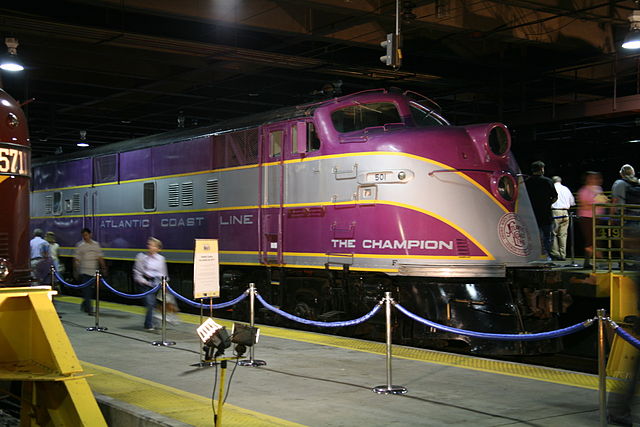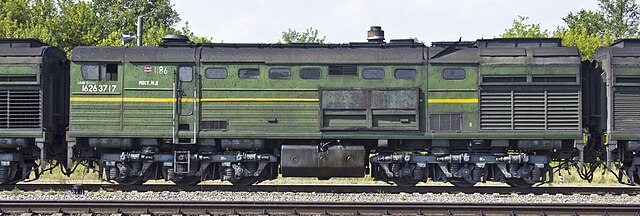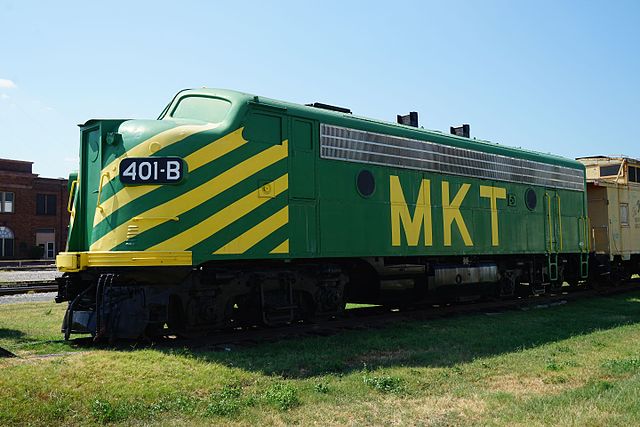The EMC E3 is a 2,000 horsepower (1,500 kW), A1A-A1A passenger train locomotive that was manufactured by Electro-Motive Corporation of La Grange, Illinois. The EMC demonstrator #822 was released from La Grange for test on September 12, 1938. The cab version, or E3A, was manufactured from September 1938 to June 1940, and 17 were produced. The booster version, or E3B, was manufactured in March 1939 and September 1939, and 2 were produced. The 2,000 hp (1,500 kW) was achieved by putting two 1,000 horsepower (750 kW), 12-cylinder, model 567 engines in the engine compartment. Each engine drove its own electrical generator to power the traction motors. The E3 was the fourth model in a long line of passenger diesels of similar design known as EMD E-units.
ACL #501 at the North Carolina Transportation Museum. On the down left is lettering The Champion.
A B unit, in railroad terminology, is a locomotive unit which does not have a control cab or crew compartment, and must therefore be operated in tandem with another coupled locomotive with a cab. The terms booster unit and cabless are also used. The concept is largely confined to North America. Elsewhere, locomotives without driving cabs are rare.
"B" unit of the Russian 3TE10MK diesel locomotive with a cab-styled body
Russian OPE1A [ru; uk] industrial electro-diesel locomotive for quarry railways with primary electric locomotive and two diesel-electric B units
B unit converted from an EMD F9AM locomotive. The cabin shape was preserved, but its windows were blanked out and the front door was added.
A four-axle EMD GP38-2 B-unit coupled with six-axle SD40-2 A-unit



![Russian OPE1A [ru; uk] industrial electro-diesel locomotive for quarry railways with primary electric locomotive and two diesel-electric B units](https://upload.wikimedia.org/wikipedia/commons/thumb/d/d3/%D0%9E%D0%9F%D0%AD1%D0%90-044.jpg/640px-%D0%9E%D0%9F%D0%AD1%D0%90-044.jpg)

